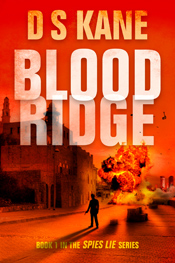March 14, 2010
I just read an article in slicon.com about corporate cyberespionage (Cyber espionage: Firms fail to take threat seriously, by
Shelly Portet, http://www.silicon.com/technology/security/2011/03/09/cyber-espionage-firms-fail-to-take-threat-seriously-39747112/).
Computer fraud has been responsible for a massive number of cases of identity theft over the last decade, and there is no end in sight. Both my wife and I have had our identities stolen, and sold to criminals. As a result, we needed an attorney’s help to work with the IRS, which thought we had an offshore bank account funding terrorism. Nasty.
Has this happened to you or someone you know? Do you track your credit reports to stop identity theft (after it’s occurred)?
From the article, it appears most corporations haven’t awakened to the possibility that a cybercriminal has hacked their corporate website and stolen proprietary information for resale or competitive response.
The author of the report recommends that corporate users not copy files to their own computers, since it would provide more targets for a hacker. But there’s a problem in not having multiple copies out there: A single copy on a cloud server provides less work for a hacker who desires to modify the file so it either contains viruses or, even worse, is no longer an accurate depiction of the thoughts of its creator. Without multiple copies, reconstructing the original version would be difficult or impossible. Seems to me, offsite, offline copies would be a better alternative.
I wrote an article years ago entitled “Cash Management Data Security,” for the Journal of Cash Management (under my real name: Volume 4, Number 5, page 74). I also was quoted on the subject of computer fraud corporate cybercrime in Pension & Investment Age on November 12, “Workstation Technology Dominates Conference,” 1984, page 26): “Nothing in the field of data security has really changed over the past seven years, only the prominence of the problem.”
Now, with cloud computing becoming prevalent, it appears we’re ripe for a bigger problem than ever.
What do your think? If the company you work for is prepared to defend itself against cybercriminals, I'd like to know about it. BUT, don't leave your company's name. We wouldn't want to tempt fate now, would we?
Monday, March 14, 2011
Wednesday, March 2, 2011
Plotting Your Story Using Screenwriting Tools: Soth versus Schechter
March 2, 2011
Publishers will want to wrangle every last penny of revenue from anyone’s first novel. One of their best sources is the movie that can be made from a novelist’s first publication. The major reason is that movies drive incremental book sales for the author, years after the book has backlisted.
With that as their reasoning, for decades, book publishers now read every potential book with their eyes imaging it in a movie theatre. The inevitable result is that novelists have started studying screenwriting to ensure they can fulfill the publisher’s unstated demand: Could a movie be made from this manuscript?
Since the most important way to develop character is through dialogue and stage direction of the character (what they do when they feel something), screenplay has become increasingly important. Teachers like Eric Witchey use tools like E-D-A-C-E (Emotion leads to Decision leads to Action leads to Conflict needs to another Emotion), where dialogue and behavior driver character development.
There are two superb teachers of screenplay writing, Chris Soth and Jeffrey Alan Schechter. Soth (www.milliondollarscreenwriting.com) has a PDF eBook called Million Dollar Screenwriting: Make Money with the Mini-Movie Method, available from his website for less than $50. Schechter wrote an PDF eBook called Totally Write Guide to Bulletproof Screenplay Structure Guide, which he made available from his website, but it was later turned into a software product called Contour, available from Mariner Software (http://www.marinersoftware.com/products/contour/) for less than $50. Each one has a system that is far advanced past the old three act structure that Chris Voglar (The Writer’s Journey) suggests for story development. The objective is to produce two-minute scenes, ideal for a movie.
I reviewed Schechter’s system and started using it several years ago as a result of a conversation with Dennis Phinney of ActFourWriters.com. Linda Rohrbough (a former ActFourWriters.com member) suggested Soth’s system and I examined it last year. While there were similarities, I found the mini-movie system offered a simpler design to my plot. But, it wasn’t complete. When I cross-indexed the two systems, I finally had a product I could use, complete with a way to justify the times when I would have to break the rules. I developed a Microsoft Excel workbook that you can use, complete with the cross-index embedded within, called BLANK Outline and Grading Sheet.xls.
I use the tool to craft the early stages of my story. The instructions are simple. Enter your chapter and page number and the Description of the scene into columns A, B and F, and ensure they correspond to the aspect of your novel’s theme related to the scene in column G. Do that for all 44 plot points, all 8 mini-reels. Each scene should be about two minutes of real-time action in a movie, since the 44 plot points would then become an 88 minute movie. The other way to see it is that all 8 mini-reels would become a 96 minute movie. Examine the spreadsheet and do the math. It works. In effect, your time line becomes what a movie of your story would require in terms of minutes.
When you are finished, write the manuscript. When it has gone through all of the critiques necessary to complete its improvement cycle, review it against the Excel workbook and make corrections to the workbook so they correspond in all aspects (page number for each chapter, and all plot point descriptions. Send the workbook out with the manuscript to your test readers, and ask them to enter letter grades (column H) and comments (column I), enter evaluations (letter grades and comments) for every principal character (rows 66 through 78), and grades and comments for every aspect of the manuscript (rows 92 through 167). When you receive the returned workbook, review their comments and make your final changes.
If you want to download the blank workbook, visit my website's blog tab, at http://dskane.com/Blogs.aspx. Look for this blog entry and the download link will be at the end of the entry,
Subscribe to:
Posts (Atom)



